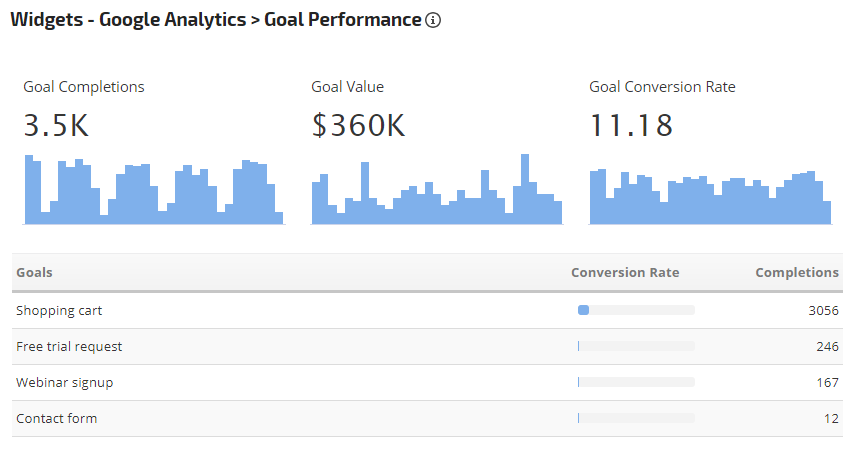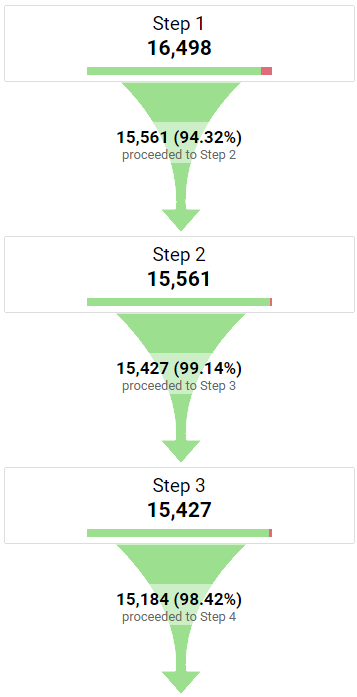Discovering What Data Is Google Analytics Goals Unable to Track
Discovering What Data Is Google Analytics Goals Unable to Track
Blog Article
Discover the Limitations of Google Analytics Goals: Unveiling the Information Kind That Remain Untrackable
As companies increasingly rely on data-driven decision-making, comprehending the limitations of tools like Google Analytics ends up being paramount. While Google Analytics Goals deal beneficial insights right into user communications, there exist information kinds that avoid tracking, posturing difficulties to a thorough understanding of customer actions.
Insufficient Individual Trip Tracking
Incomplete user journey monitoring within Google Analytics can hinder the ability to precisely analyze individual habits. When the customer journey is not fully tracked, there are gaps in the data that avoid a detailed understanding of just how customers connect with a web site. This lack of insight can bring about missed out on possibilities for optimization and enhancements to the individual experience.
One typical problem with incomplete user journey tracking is the failure to see the complete path that users take in the past completing an objective or leaving the site. Without this info, it is testing to identify where users may be coming across obstacles or friction factors that avoid them from converting. Additionally, incomplete tracking can cover the impact of particular marketing initiatives or internet site changes on customer actions.
To resolve this constraint, it is important to establish appropriate tracking mechanisms within Google Analytics to capture the entire individual trip. This may involve establishing event monitoring, objective funnels, or utilizing devices like Google Tag Supervisor to ensure that no crucial communications go unrecorded. By obtaining an extensive sight of the individual trip, web site owners can make more enlightened decisions to boost individual involvement and drive conversions.
Attribution Challenges
Browsing through acknowledgment difficulties in Google Analytics requires a complete understanding of exactly how different touchpoints add to the overall conversion process. Acknowledgment challenges develop from the complexity of modern consumer trips, where individuals interact with numerous networks prior to converting.
One common attribution challenge is the difficulty in associating conversions to the proper source, especially in situations where customers engage with multiple channels prior to transforming. Additionally, cross-device tracking poses another attribution challenge, as individuals commonly switch over between tools during their trip, making it challenging to track their communications seamlessly.
Offline Conversions
Offered the difficulties connected with connecting conversions precisely in online networks, the measurement of offline conversions provides a significant chance for marketing professionals looking for a more thorough understanding of their clients' trip. Offline conversions refer to activities that customers absorb the physical world, such as making acquisitions in brick-and-mortar shops or over the phone, attending events, or involving with published products - what data is google analytics goals unable to track. These conversions are important for organizations that operate both online and offline, as they give valuable insights into the performance of marketing projects throughout different touchpoints
Tracking offline conversions generally posed a substantial difficulty for marketing professionals, as it was testing to link these actions back to particular on-line interactions accurately. With innovations in technology, such as the assimilation of CRM systems, unique identifiers, and voucher codes, services can now connect the gap between online and offline information to get a much more alternative sight of consumer behavior. By efficiently gauging offline conversions, marketing professionals can enhance their methods, allocate resources extra successfully, and ultimately enhance the overall customer experience.
Cross-Device Tracking
Cross-device monitoring plays a vital role in recognizing the interconnected nature of consumers' electronic interactions across multiple devices. In today's omnichannel world, where users perfectly change in between desktops, smart devices, and tablets, tracking their behavior across these gadgets is crucial for marketers to gain a detailed view of their client trip.

Additionally, personal privacy worries and laws such as GDPR and CCPA have further complex cross-device monitoring. With customers demanding even more control over their information and raised limitations on monitoring technologies, marketing professionals should locate privacy-compliant and ingenious methods to attach customer communications throughout gadgets.
Dynamic Web Content Involvement
Recognizing customer interaction with vibrant material is essential in optimizing digital marketing techniques for enhanced audience communication. Dynamic web content describes internet site components that change based upon user habits, choices, or various other factors, offering an individualized experience. Tracking customer communications with dynamic content positions challenges for traditional analytics tools like Google Analytics.
While Google Analytics can track standard interactions like clicks and page views, it may have a hard time to record more nuanced engagements within vibrant web content. what data is google analytics goals unable to track. Metrics such as time spent on particular dynamic components, float activities, or interactions within pop-ups are frequently not conveniently measurable using common monitoring techniques. This limitation impedes marketers' ability to fully grasp just how customers are involving with dynamic web content and customize their approaches appropriately

Final Thought
To conclude, Google Analytics objectives have restrictions in tracking incomplete individual trips, attributing conversions properly, capturing offline conversions, tracking cross-device interactions, and measuring vibrant material engagement. These constraints highlight the significance of discovering additional tracking approaches and devices to acquire a much more thorough understanding of user actions and conversions past what Google Analytics can offer.
While Google Analytics Goals deal important insights into individual communications, there exist data kinds visit the site that elude monitoring, posing challenges to a detailed understanding of customer habits.Incomplete customer journey monitoring within Google Analytics can prevent the capacity to properly assess customer actions. When the user trip is not completely tracked, there are spaces in the data that prevent a comprehensive understanding of how individuals engage with an internet site.One common issue with incomplete individual trip tracking is the inability to see the complete course that individuals take previously finishing a goal or leaving the website. By acquiring an extensive view of the customer journey, internet site proprietors can make even more educated decisions to enhance customer interaction and drive conversions.
Report this page